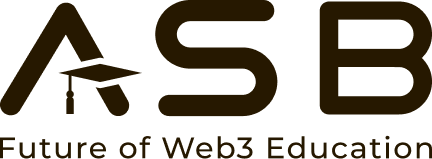Exploring the Key Transformative Features of Web 3.0
In the ever-evolving landscape of technological innovation, the emergence of web 3.0 technology represents a paradigm shift that promises to reshape the way we interact with the digital world. While its predecessors, Web 1.0 and Web 2.0, laid the groundwork for online connectivity and user-generated content, Web 3.0 introduces a new era of possibilities.
Understanding the core features of Web 3.0 is not just a technological pursuit; it’s an essential step toward navigating the dynamic and decentralized digital landscape of the future. This write-up delves into the key features of Web 3.0, elucidating their significance. impact on our digital lives and why learn web 3.0.
Decentralization and Peer-to-Peer Networks
Web 3.0 development embodies the principle of decentralization, where power and control are distributed among a network of peers. Unlike the centralized architecture of its predecessors, Web 3.0 leverages peer-to-peer (P2P) networks to enable direct interactions between users. This foundational feature ushers in a new era of empowerment, where individuals have greater autonomy over their online experiences. Decentralized applications (DApps) exemplify this concept, offering everything from decentralized social networks to financial platforms that operate without intermediaries. The implications for data ownership and privacy are profound, as users regain control over their digital footprint and personal information.
Interoperability and Cross-Platform Integration
One of Web 3.0’s defining features is its emphasis on interoperability, enabling seamless data exchange across disparate platforms and systems. This interconnectedness fosters a holistic digital ecosystem, where information flows effortlessly and enhances user experiences. Blockchain technology plays a pivotal role in enabling cross-platform integration, acting as a secure and transparent bridge for data exchange. Real-world examples of interoperability range from blockchain-based supply chain management to cross-border financial transactions, demonstrating the potential to revolutionize industries.
Semantic Web and AI Integration
The semantic web is a cornerstone of Web 3.0, transforming the way machines understand and interpret human-readable content. The integration of artificial intelligence (AI) and machine learning augments the capabilities of the semantic web, facilitating context-aware interactions and personalized user experiences. Through AI-powered algorithms, the web evolves from a passive information repository to an intelligent companion that anticipates user needs. Industries such as healthcare benefit from AI-driven diagnostics, while personalized recommendations reshape e-commerce.
Smart Contracts and Self-Executing Code
Web 3.0 introduces the concept of smart contracts, self-executing code that automates and enforces agreements between parties. Operating on blockchain networks, smart contracts ensure transparency, security, and efficiency in transactions. Industries ranging from finance and supply chain to real estate leverage smart contracts to streamline processes and reduce reliance on intermediaries. Despite their potential, challenges such as scalability and legal recognition require careful consideration for mass adoption.
Data Ownership and Control
A fundamental shift in web 3.0 technologies is the reimagining of data ownership. Users regain sovereignty over their data, deciding who accesses it and for what purpose. Decentralized identity systems play a pivotal role in user-centric data control, enhancing privacy and enabling secure authentication across services. Furthermore, the paradigm of data monetization emerges, allowing users to willingly share their data in exchange for incentives, fostering a transparent and mutually beneficial relationship between users and businesses.
Tokenization and Digital Assets
Tokenization introduces a revolutionary way of representing real-world assets on the blockchain. Tokens serve as units of value exchange, facilitating transactions and incentivizing user participation. Beyond cryptocurrencies, token standards like ERC-20 and ERC-721 enable the representation of assets such as real estate, art, and intellectual property. Tokenization introduces liquidity, fractional ownership, and opens avenues for democratizing access to traditionally illiquid assets.
Enhanced User Experience and Immersive Technologies
Web 3.0 elevates the user experience by integrating immersive technologies like virtual reality (VR) and augmented reality (AR). Evolving from static web pages, the web becomes an interactive and experiential realm. Industries such as e-commerce, gaming, education, and healthcare embrace immersive technologies to engage users on a deeper level. However, designing compelling and user-friendly immersive experiences poses challenges that necessitate careful consideration.
Conclusion
The features of Web 3.0 transcend the boundaries of traditional web experiences, offering a tantalizing glimpse into the future of digital interactions. By understanding the core elements of Web 3.0, individuals and businesses can prepare themselves for a transformative journey.
The decentralized, interoperable, and intelligent nature of Web 3.0 beckons us to explore new horizons and embrace a digital landscape that empowers users, enhances privacy, and fosters innovation. As we navigate the evolving landscape of technology, Web 3.0 stands as a beacon of possibility, inviting us to be active participants in shaping the digital future.
Enroll into some credible web 3.0 developer course and step into the world of digital transformation.
